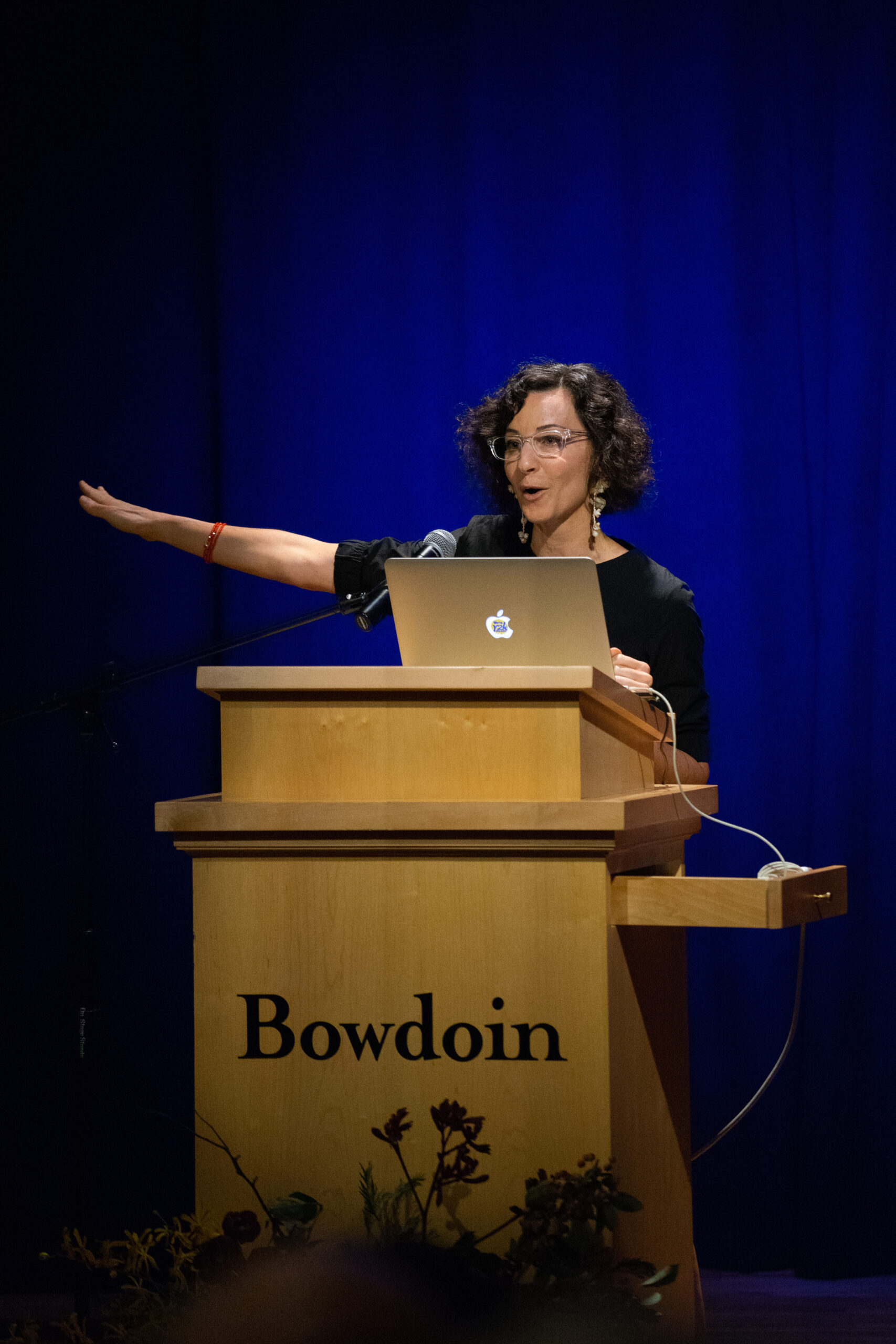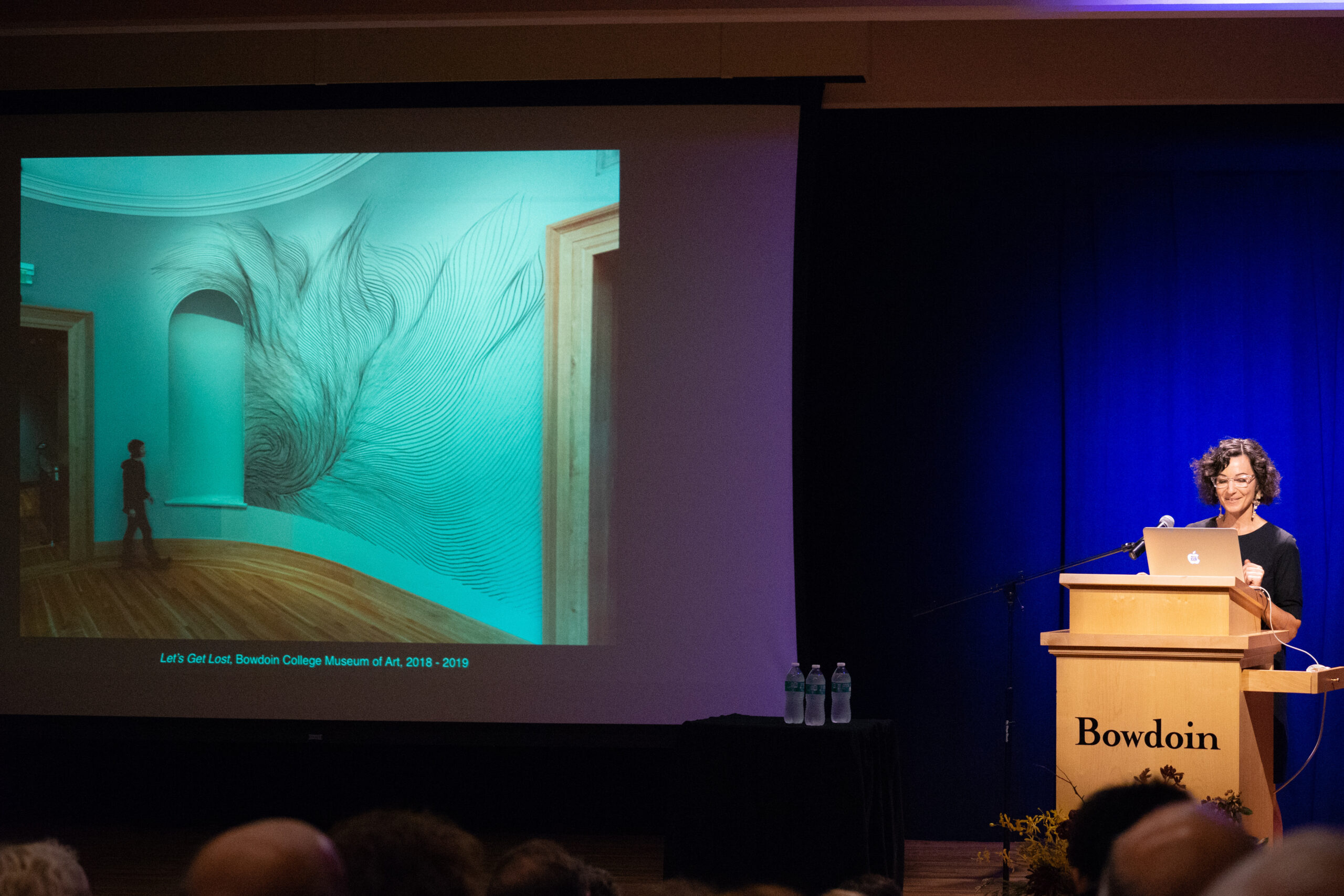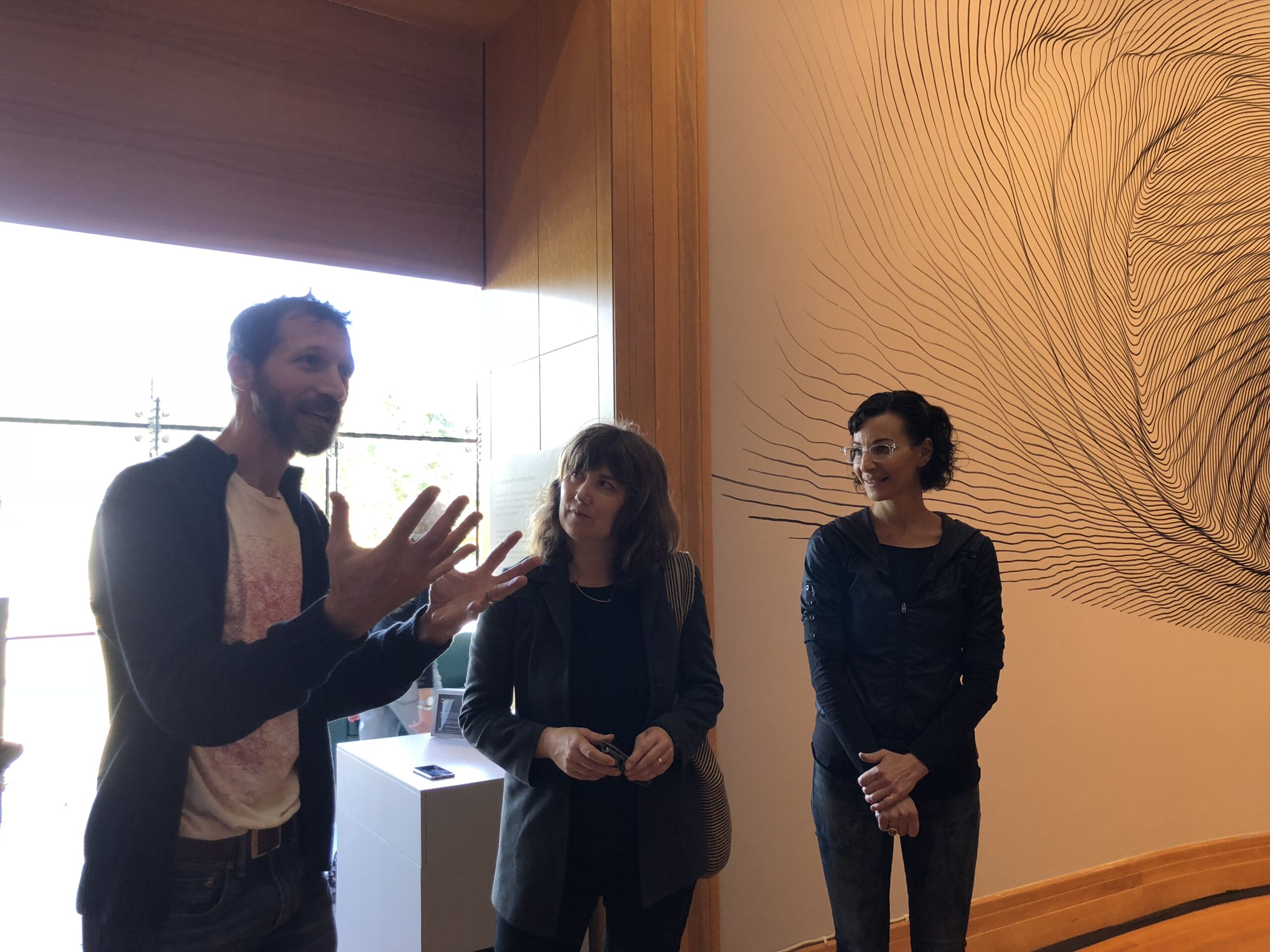Line and sound converge in immersive installation
September 28, 2018
 Jack Burnett
Jack BurnettLike undulating ripples of water swept by a lingering breeze, swirls of black lines converge and disperse in linn meyers’ site-specific drawing “Let’s Get Lost.” Complemented by an interactive sound installation “Listening Glass” by Rebecca Bray, James Bigbee Garver and Josh Knowles, the piece transforms the Walker Gallery at the Bowdoin College Museum of Art into a multi-sensory metaphor for artistic process, ephemerality and time.
As meyers walked the audience through her creative evolution in Kresge Auditorium on Wednesday night, she explained that “Let’s Get Lost” serves both as an invitation for participation and a reflection of her own artistic enterprise.
“I’ve done my best work when I follow my own instructions by getting lost, so I believe that an openness to getting lost is a valuable approach taken [while] trying to do any kind of creative work,” said meyers.
Named the 2018 Halley K. Harrisburg ’90 and Michael Rosenfeld Artist-in-Residence, the Washington, D.C.-based artist approaches her monumental drawings with a focus on four principal themes: “sensation, entropy, ephemerality and labor”—all characteristic of and integral to her creative process.
Her transition from panel painting to linear murals stems from a concern with attachment to objects and an urge to subvert conventions in art collecting.
“In 2007, over a decade ago, I made a pivotal piece in my studio—I made this wall drawing,” said meyers. “And for the first time I was able to create a work that couldn’t really be owned. So when I made this wall drawing, architecture became a new material in my toolbox.”
With this new-found liberty, meyers went on to create multiple site-specific drawings in various institutions, such as the Hammer Museum in Los Angeles, CA, the Phillips Collection in Washington, D.C., and the Hirshhorn Museum in Washington, D.C. Despite their monumentality in scale—spanning as long as 54 feet in circumference—the drawings are by nature ephemeral, made with the intention to be effaced at the end of the exhibition.
“All of these wall drawings are temporary, so they all have a predetermined lifespan,” she said. “To see these ephemeral or temporary works within an institution that’s tasked with preservation and conversation creates a bold juxtaposition.”
“It’s not a passive thing; the drawing isn’t made with disappearing ink or some other temporary material,” she continued. “It is an active choice to end the life of the drawing.”
 Jack Burnett
Jack BurnettScheduled to be on view through September 29, 2019, “Let’s Get Lost” is indeed transitory by design. Yet meyers’s collaboration with Bray, Garver and Knowles imbues the drawing with an alternative vitality through the interaction and participation from the audience.
Bray, who is an installation artist, and Garver, a sound designer, had previously curated an interactive experience called “Framing Device” in response to meyers’s drawing at the Hirshhorn Museum. The artists soon realized the creative capacity in traversing the boundaries of medium, and conceived a project which combines aesthetic exploration with technological innovation.
In the immersive sonic installation “Listening Glass,” visitors use an iPhone app which generates distinct sounds according to the pattern and density of meyer’s line drawings. As one moves a phone across the surface of the drawing, spontaneous melodies are created and the gallery space is turned into a form of instrument.
By interacting with both the visual rhythm and musical composition, viewers also create their own works of art, while unconsciously mimicking meyers’s trail of mark-making with their devices in hand—not so dissimilar from meyers moving across the surface with her graffiti marker.
“We [hoped to] encourage the audience to get closer both to the art itself—physically and conceptually closer—and also really think about an experience of process of time … and we thought about how do we help the audiences, invite them to maybe mirror some of those gestures that linn makes as she creates the piece and also just experience the piece differently,” said Bray.
“Linn has not drawn anything on the wall, and I have not made any sounds for you to listen to, and Rebecca has not made any decisions about all those things,” added Garver. “We’ve created an arena in which you as a participant can make art.”
The iPhone, with an app designed by software developer Knowles, is thus transformed into a kind of magic wand, sparking visceral and palpable sensations. Every detail is carefully orchestrated by the four artists to enhance this immersive interaction; secret clues are woven within the web of lines to trigger particular effects.
“What we want to encourage is a kind of exploring and getting lost that visitors to art museums don’t often encounter,” meyers said.
For the museum, the inclusion of this innovative collaboration between visual and sensory perception signifies the College’s commitment to creative disposition, explained Museum co-director Anne Goodyear.
“We’re really taking advantage of the fact that, in the context of this academic museum, we can have that wonderful experience of walking a tightrope and knowing that we are part of a community that welcomes the challenge [of] genuine innovation, and welcomes the opportunity to partner with people who are pushing creative practice in new directions,” said Goodyear.


Comments
Before submitting a comment, please review our comment policy. Some key points from the policy: